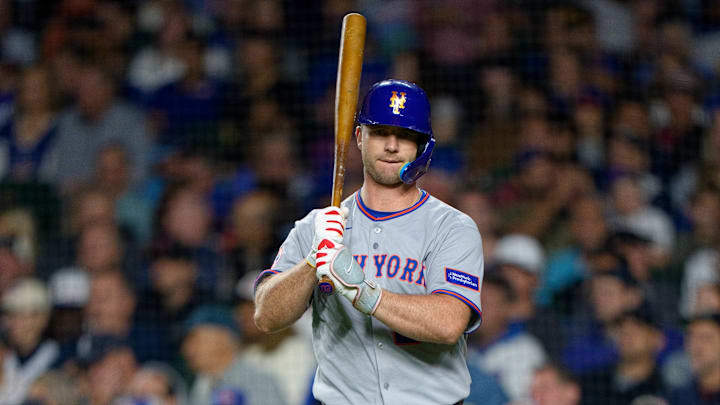Josh Naylor signing for five years and $92.5 million won’t rearrange the offseason, but it does give it a cleaner outline. He’s the kind of hitter whose value feels logical the moment the numbers appear, a rare bit of tidy math in a market that usually prefers puzzles. That sort of clarity tends to echo around front offices already balancing more questions than answers, especially in places where winter decisions carry extra weight. For the New York Mets, the Naylor deal doesn’t spark urgency so much as sharpen it, offering a timely snapshot of where the market sits and what it quietly implies next.
Are the Seattle Mariners ready to trade Luis Castillo and is he the guy to get?
Jerry Dipoto mentioned a few weeks ago that Seattle’s payroll would sit roughly where it finished the season, and the Naylor contract tightens that margin faster than they probably wanted. A roster built around inexpensive, arbitration-year starters suddenly has one salary that sticks out in bold. Luis Castillo’s two remaining years at $24 million, plus a 2028 option that vests if he surpasses 180 innings in 2027, look like the clearest path to financial breathing room.
Castillo still checks the reliability boxes, clearing 175 innings with mid-3 ERAs and 160-plus strikeouts in each of the last three seasons, but the days of overwhelming lineups are fading. That reality matters when a pitcher carries a $24 million price tag. Even if taking on the contract would slash Seattle’s prospect ask, the Mets shouldn’t be the ones to volunteer. With cleaner upside available elsewhere, Castillo feels more like someone else’s solution than New York’s.
There are only three first base options the Mets fanbase would accept
With Josh Naylor off the board, the Mets’ realistic first base options shrink to a trio the fan base would actually sign off on: Cody Bellinger, Munetaka Murakami, and Kazuma Okamoto. David Stearns has spent the entire offseason nudging the roster toward run prevention, and if Pete Alonso returns, the expectation is that he shifts into a DH-heavy role he’s already said he’s open to. After a statistically rough defensive year from Alonso, many Mets fans wouldn’t just accept that adjustment; they’d welcome it.
Whether Alonso stays or not, these three alternatives offer the cleanest mix of offense and defense the market can produce. Murakami and Okamoto arrive with serious offensive resumes, and Okamoto brings over three Gold Gloves to anchor the profile. Bellinger is the domestic option Mets fans know too well after watching him thrive in the Bronx, offering defensive flexibility across three outfield spots, including first base. His bat remains a real separator, hitting .348 with runners in scoring position and topping 95 RBIs in two of the last three seasons. For a team seeking balance instead of pure power, it’s no surprise these names sit at the top of the list.
A new market reality for Pete Alonso
From Alonso’s side of the table, the Naylor contract can’t be the most comfortable data point. A first baseman who posted 5 DRS and 5 OAA with Seattle just locked in an $18.5 million AAV, and even though his offensive profile doesn’t match Alonso’s power ceiling, it’s still a strong bat. Naylor hit over .295 in two of the last three seasons and averaged 99 RBIs in that span. That’s a well-rounded player earning significantly less than what Alonso’s market once seemed to promise.
Where this becomes tricky for Alonso’s camp is in how clearly the deal reframes value. Teams are looking closely at complete profiles, and Naylor offers defensive impact, consistent contact, and dependable run production at a cost of almost $15 million per year below Alonso’s projected range. His contract doesn’t diminish what Alonso brings, but it does highlight how sharply clubs are weighing efficiency over star premiums. It’s a reminder that the market may judge “value” differently than pure power numbers suggest.
